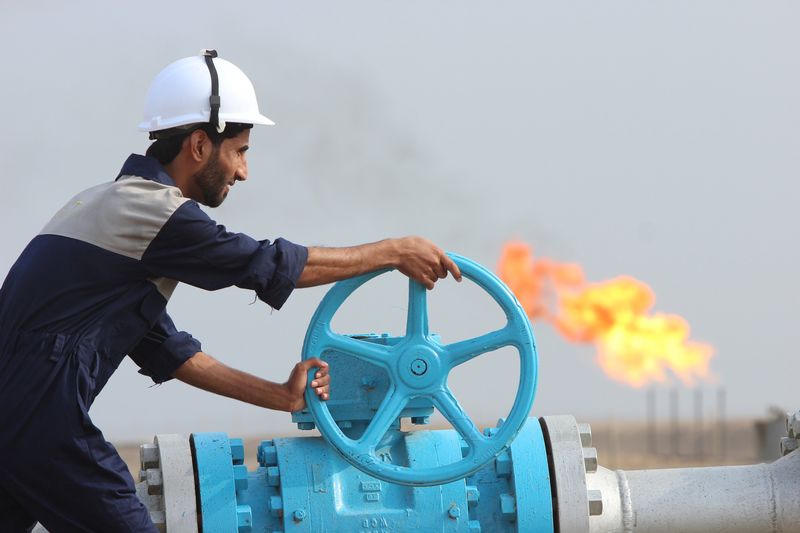(Repeats with no changes)
By Nia Williams
CALGARY, Alberta, Feb 23 (Reuters) - With Canadian benchmark
crude near record lows, some major oil sands producers are
starting to consider slowing output at their huge thermal
operations in northern Alberta, a process fraught with technical
and financial difficulties.
Cutting production is one of the least appealing options for
producers who have invested billions of dollars and years of
work in carefully-engineered bitumen reservoirs and fear doing
permanent damage to sites designed to operate for decades.
Two producers, Cenovus Energy CVE.TO and MEG Energy
MEG.TO - both among the most efficient producers in the patch
- say they do not see the need to act yet, but have plans for
reducing volumes if oil prices fell further and stayed there.
Expensive technology needed to pump high-pressure steam to
unlock bitumen deposits mean Alberta's oil reserves - the
world's third-largest - have some of the highest overall
production costs, well above the present price of around $18 a
barrel for benchmark oil sands crude. (Graphic: http://reut.rs/1Rc4Tjm)
The producers, however, focus on their operating costs, wary
of high potential costs of cutting and later cranking up
production and the risk of upsetting the delicate balance needed
to pump out heated bitumen when wells get idled for too long.
MEG Chief Executive Bill McCaffrey said the company could
slow output by letting its Christina Lake oil sands reservoir
enter natural decline if it was unable to cover variable cash
operating costs of around C$4 a barrel for a sustained period.
In the fourth quarter of 2015, when Canadian heavy crude
averaged $27.7 a barrel, the revenue MEG got for a barrel of oil
once blending, transportation, operating expenses and royalties
are taken into account, was just over C$9. With benchmark
Canadian crude trading around $10 a barrel lower so far this
year, that revenue is almost certainly insufficient to cover the
cash costs.
Cenovus Chief Executive Brian Ferguson told Reuters earlier
this month U.S. benchmark crude would have to stay below $27 a
barrel well into 2017 for slowing production to make economic
sense, but was prepared for such a possibility and had plans to
reduce volumes if needed.
For now, producers are looking at alternatives such as
selling off pipeline, storage and production facilities to ease
the financial squeeze caused by dwindling revenues.
The companies have also been experimenting with maintenance
schedules, allowing output to drop temporarily at some locations
either by delaying equipment servicing or bringing forward
planned maintenance turnarounds. L3N15J3RT
CAUTIONARY TALE
The fate of small producer Connacher Oil and Gas CLC.TO
explains why outright production cuts are such anathema for
Canadian oil sands companies.
During the previous crude price slump in late 2008, the
company shut in half of its 10,000 bpd Great Divide thermal
production for two months and has struggled to hit output
targets ever since. Last month it said it would slash its oil
sands production by 70-80 percent. L2N0WY1ZF
While operators stop steaming through some wells for up to
three weeks during planned maintenance, analysts say halting
steam injection for more than a month can drop reservoir
pressure and make it hard to pump out heated bitumen again.
For analysts, the very fact that big oil sands companies are
even talking about slowing production despite the risk of
permanently damaging reservoirs shows how bleak the industry
outlook is.
"It's a new way of thinking," said Wood Mackenzie analyst
Mark Oberstoetter. "Now it's not to maximise production, but
look into what they can do to bring a little bit off without
jeopardizing future barrels."
FirstEnergy (N:FE) Capital analysts say producers may curtail
output by 10 to 30 percent if benchmark heavy Canadian crude
drops under $12 a barrel, below the lows around $13 touched in
January.
For most oil sands companies reducing steam injections to
cut production is a hypothetical scenario as thermal extraction
techniques have only been around over the past three decades
when the focus has squarely been on boosting output.
"This expertise does not exist yet. Reservoir models are
still being proven for thermal processes," said Doug Hollies,
vice president of engineering at Codeco Oilsands Engineering.
Unlike large oil sands producers, many of which have
integrated refining businesses or assets to sell, small
companies do not have the luxury of cross-subsidizing
operations.
One engineering consultant, who declined to be named because
of client confidentiality, said one company was considering
shutting down its 600-800 barrel per day pilot project at
month-end after 18 months of ramping the reservoir up to full
pressure, because it is bleeding money.
It will join a handful of other tiny thermal pilot projects
that have fallen victim to the global price rout and shut down
since June 2014.
($1 = 1.3734 Canadian dollars)
<^^^^^^^^^^^^^^^^^^^^^^^^^^^^^^^^^^^^^^^^^^^^^^^^^^^^^^^^^^^
Oil sands production http://reut.rs/1Rc4Tjm
^^^^^^^^^^^^^^^^^^^^^^^^^^^^^^^^^^^^^^^^^^^^^^^^^^^^^^^^^^^>
